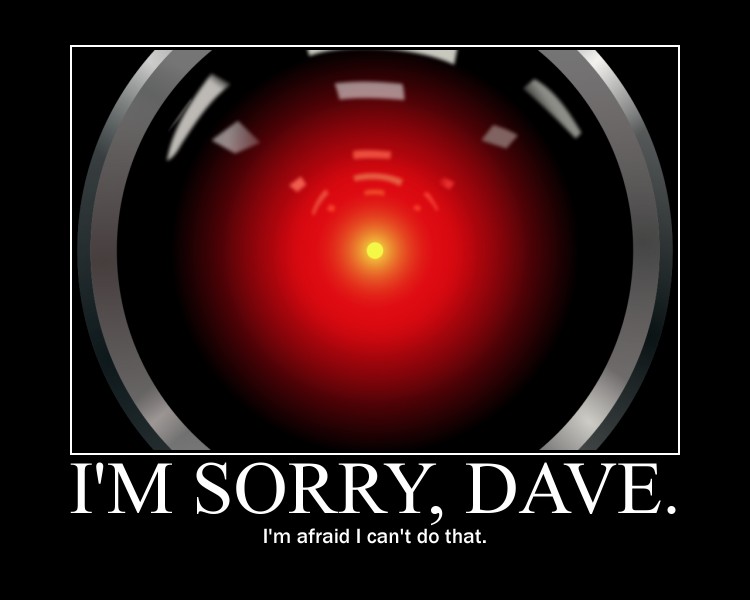

“I’m afraid I can’t let you do that, Dave”. You may remember the climactic scenes of the film as fictional astronauts Frank Poole and Dave Bowman battle for their lives against Discovery’s supercomputer-gone-bad, the HAL9000, “born” this day in 1992 at the HAL Labs in Urbana Illinois, according to the screenplay.Īfter HAL hurled Frank Poole off into the black void of space and shut off life support to the rest of the crew while still in suspended animation, Dave Bowman is now the sole survivor of the Discovery mission, desperately seeking to unhook the power modules, to the HAL9000. It is Clarke who wrote the script for Stanley Kubrick’s 1968 dystopic 2001: A Space Odyssey.Ĭlarke was so impressed with the Daisy Bell demonstration he wrote it into his screenplay. Today, Clarke joins American writers Isaac Asimov and Robert Heinlein as the “Big three”, in science fiction. If you think that name sounds familiar, you’re right. “A replica of Kempelen’s speaking machine, built 2007–09 at the Department of Phonetics, Saarland University, Saarbrücken, Germany” H/T WikipediaĪt Bell Labs in the 1930s, the pioneering work of acoustic engineer Homer Dudley led to the Vocoder, a portmanteau of voice and en coder, capable of synthesizing and encrypting voice transmissions for use in secure radio communications. The receiving apparatus or Voder, a keyboard operated device capable of independent speech synthesis, was demonstrated at the 1939 World’s Fair.īy sheer coincidence, the English futurist, science-fiction writer and television host Arthur Charles Clarke was visiting his friend and colleague John Pierce at this time, at Bell Labs’ Murray Hill facility. Charles Wheatstone actually built the thing in 1846 after Kempelen died, calling his acoustic-mechanical speech machine, the ‘euphonia’. Wolfgang von Kempelen of Pressburg, Hungary, described a bellows-operated apparatus in a 1791 paper, including facsimiles of tongue and lips to produce the nasals, plosives and fricatives required to mimic most (but not all) consonant sounds. In 1779, the German-Danish scientist Christian Gottlieb Kratzenstein built a model of the human vocal tract which could produce the five long vowel sounds of the international phonetic alphabet.

Roger Bacon’s assistant is confronted by the Brazen head in a 1905 retelling of the story. 946 – 1003), the Dominican friar Albertus Magnus (c.1200 – 1280) and the English philosopher Roger Bacon (1214 – 1294). Similar legends followed the polymath Pope Silvester II (c. 1125) contains the earliest known reference to such a talking, Brazen Head. William of Malmsbury’s History of the English Kings (c. The Brazen Head of the early modern age was the legendary automaton of medieval wizards and necromancers and always said to give the correct answer, provided the question was…just right. Mímir or Mim was beheaded during the war with the rival Gods of Vanir after which Odin carried the thing around (the head), so that it may impart secret knowledge and wise counsel. It may come as a surprise as it did to me, how long the idea of other-than-human speech has been around.Īccording to Norse mythology, Mímir was the wisest of the Gods of Æsir. We’ve all tried with varying degrees of success, to dictate a text message or email. We live in an age when pocket sized devices are capable of producing text from speech, and speech from text.


 0 kommentar(er)
0 kommentar(er)
